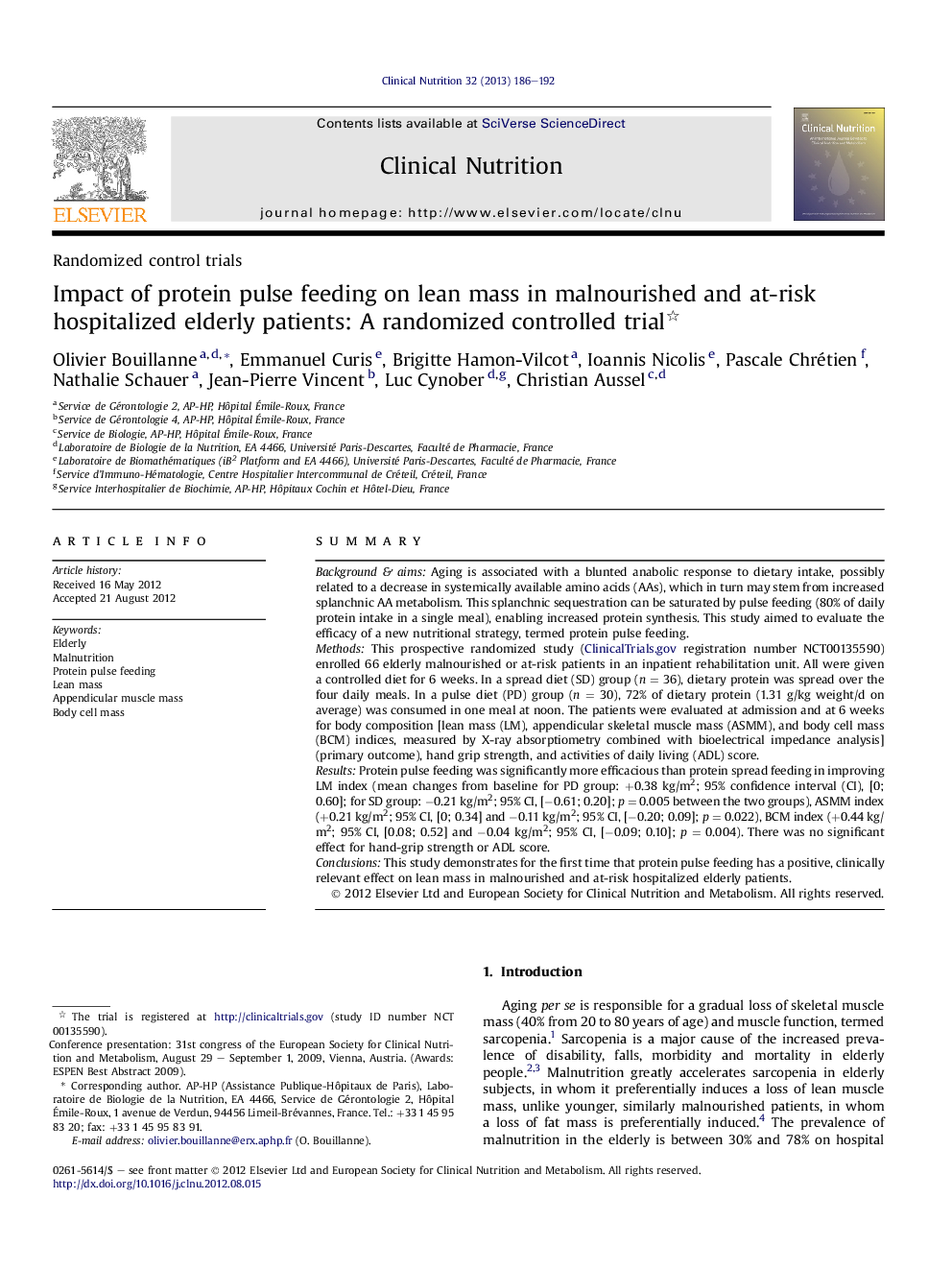| Article ID | Journal | Published Year | Pages | File Type |
|---|---|---|---|---|
| 2689739 | Clinical Nutrition | 2013 | 7 Pages |
SummaryBackground & aimsAging is associated with a blunted anabolic response to dietary intake, possibly related to a decrease in systemically available amino acids (AAs), which in turn may stem from increased splanchnic AA metabolism. This splanchnic sequestration can be saturated by pulse feeding (80% of daily protein intake in a single meal), enabling increased protein synthesis. This study aimed to evaluate the efficacy of a new nutritional strategy, termed protein pulse feeding.MethodsThis prospective randomized study (ClinicalTrials.gov registration number NCT00135590) enrolled 66 elderly malnourished or at-risk patients in an inpatient rehabilitation unit. All were given a controlled diet for 6 weeks. In a spread diet (SD) group (n = 36), dietary protein was spread over the four daily meals. In a pulse diet (PD) group (n = 30), 72% of dietary protein (1.31 g/kg weight/d on average) was consumed in one meal at noon. The patients were evaluated at admission and at 6 weeks for body composition [lean mass (LM), appendicular skeletal muscle mass (ASMM), and body cell mass (BCM) indices, measured by X-ray absorptiometry combined with bioelectrical impedance analysis] (primary outcome), hand grip strength, and activities of daily living (ADL) score.ResultsProtein pulse feeding was significantly more efficacious than protein spread feeding in improving LM index (mean changes from baseline for PD group: +0.38 kg/m2; 95% confidence interval (CI), [0; 0.60]; for SD group: −0.21 kg/m2; 95% CI, [−0.61; 0.20]; p = 0.005 between the two groups), ASMM index (+0.21 kg/m2; 95% CI, [0; 0.34] and −0.11 kg/m2; 95% CI, [−0.20; 0.09]; p = 0.022), BCM index (+0.44 kg/m2; 95% CI, [0.08; 0.52] and −0.04 kg/m2; 95% CI, [−0.09; 0.10]; p = 0.004). There was no significant effect for hand-grip strength or ADL score.ConclusionsThis study demonstrates for the first time that protein pulse feeding has a positive, clinically relevant effect on lean mass in malnourished and at-risk hospitalized elderly patients.
